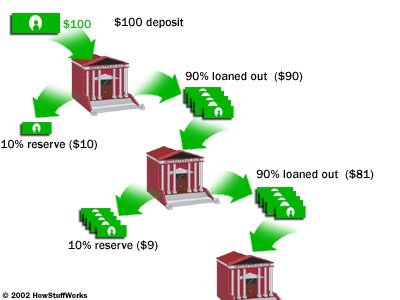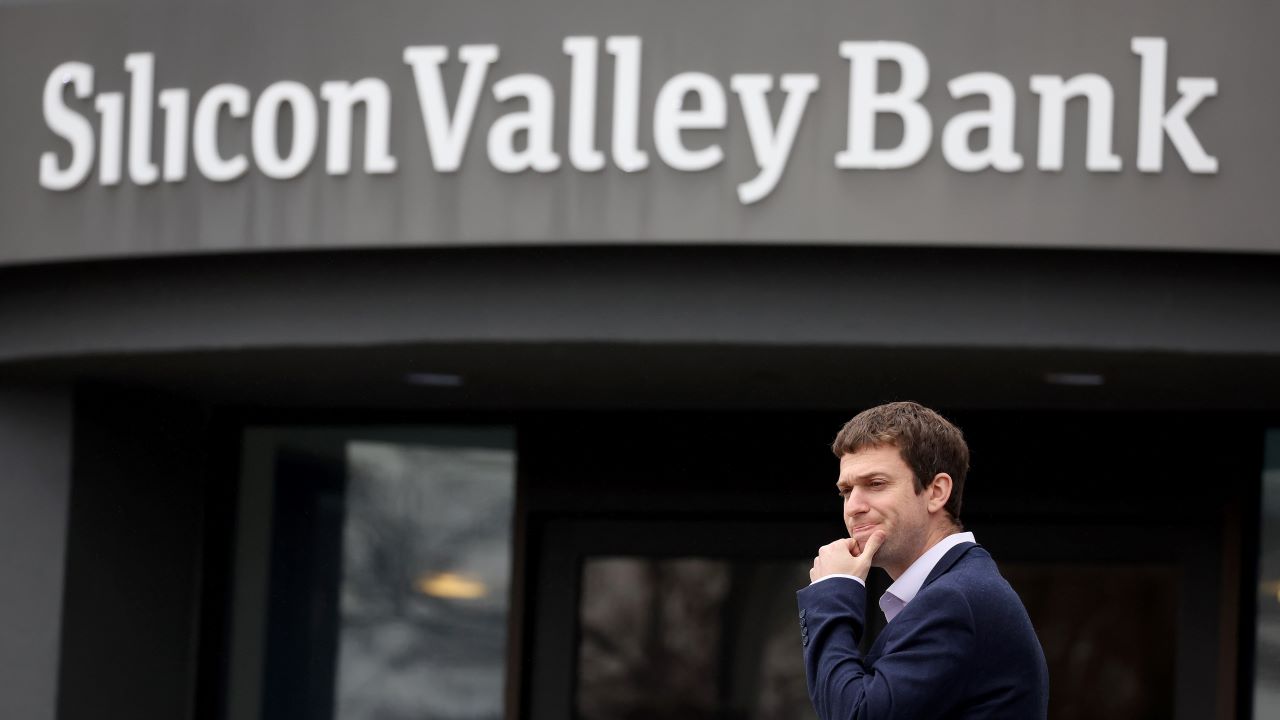Hello Havvestors! You’re reading this because you’re interested in personal or corporate finance. Now you’re probably wondering, “why is the Founder of Havvest here in Nigeria writing about some Silicon Valley Bank far away in the United States?” I’ll tell you why, in brief, and in detail.
In brief, we have a couple of business bank accounts for our startups in the U.S., and Silicon Valley Bank was almost one of them. ‘Almost’ because we were in the process of creating a bank account last year with them, but what stopped the process was that something stopped me from traveling to the U.S. to complete the account signup process. If not, right now we’d be looking into the skies wondering how we got here.
Again, some startups in Nigeria, especially in the Fintech space will be heavily impacted by this collapse. I know some Fintech companies I’ve worked with here in Nigeria that may go under as a result of this. That is if investors don’t come to their rescue immediately. For the sake of courtesy, I won’t mention names. Last week, users in Nigeria started complaining about one of them in particular.
In this blog post, I’ll be diving into the failure and collapse of Silicon Valley Bank and what could have been done to avert this monumental failure. Let’s get into it!
Silicon Valley Bank’s collapse is the second-largest bank failure in American history and the largest since the 2008 financial crisis. With $209 billion of assets and $175 billion of deposits, SVB was the 16th largest bank in America. This makes it the biggest bank failure since the collapse of Washington Mutual in 2008 (which had over $300 billion of assets).
What Really Happened?
SVB had been operating for over 40 years and had established itself as the go-to bank for startups. It was the preferred banking partner for approximately 50% of all venture-backed startups in the US. This success earned SVB a number of accolades, including being named one of America’s Best Banks in 2022 by Forbes. SVB also received an A rating from Moody’s.
However, as the tech industry boomed over the past decade, SVB became even more closely tied to startups. The bank experienced a huge inflow of deposits from startups, with its deposits tripling between 2018 and 2021.
Investors were giving millions of dollars to startups, and these companies would then deposit their funds with SVB. While this inflow of funds initially seemed like a good thing for SVB, it ultimately led to the bank taking on too much risk.
How Does a Bank Collapse?
In traditional banking, the primary way banks generate profits is by taking deposits from individuals or businesses who have money and then lending that money to others who need it. The interest generated from these loans is how banks generate profits.
Many of SVB’s customers were startups who did not need loans because they were continually receiving investments from investors. As a result, SVB had accumulated a large number of customer deposits, which it needed to invest in order to generate profits. In an effort to do so, SVB invested in bonds, as it had difficulty making loans to corporate borrowers.
However, this strategy became problematic when interest rates started to rise. SVB had bet that the Federal Reserve would hike rates slowly, but they actually hiked them much faster than anticipated. The Federal Reserve went from zero interest rates to hiking interest rates by over 1,500% in a year.
With each interest rate hike, the $80 billion in low-yield bonds that SVB had purchased with customer deposits looked less attractive, as the marketplace was selling similar bonds with a much higher yield. No one wants a portfolio of bonds yielding 1.5% when the marketplace is selling them with a yield above 5%.
As a result, SVB began to experience a decline in the value of its bonds, and the deposits it had used to purchase them began to shrink as well.
Furthermore, rising interest rates also had an impact on SVB’s customers. Many of the bank’s clients experienced a slowdown in their business growth, valuations, and funding ability, which led to them depositing fewer funds into the bank and burning through more of their cash reserves.
It’s worth noting that when interest rates rise, most banks pay higher interest on deposits to attract more customers. But people like us at Havvest offer great interest rates, day in, and day out. Took a break to promote our business a bit 😉
In addition, Moody’s issued a warning of a possible downgrade to SVB’s credit rating, which could have caused investors and depositors to lose confidence in the bank. To avoid this, SVB decided to sell $21 billion of its bond portfolio at a loss of $1.8 billion to raise money. The bank also planned to raise more money by selling shares, but this announcement created a panic and led to a run on the bank, ultimately contributing to its collapse.
This combination of factors ultimately led to SVB’s collapse.
On Thursday, SVB’s stock plummeted over 60%, prompting many VC funds to advise their portfolio companies to remove their deposits from the bank. The mass withdrawals created a run on the bank, and even Peter Thiel urged his Founders Fund companies to start pulling their money from the bank.
The fear of systemic risk spread throughout Friday, leading to several bank stocks being halted at various points during the day. Nasdaq halted trading of SVB’s stock on Friday after it fell over 60% in premarket trading. Reports emerged that the bank was looking to sell itself, worsening the situation. SVB went from trading over $700 in October 2021 to below $50.
Did someone ask what a bank run is?
Customers have the flexibility to access their deposits at any time, but banks typically only maintain a small fraction of their funds (at least 10%) and lend out the rest. This practice is known as fractional banking.
However, a bank run can occur when a large number of depositors withdraw their deposits simultaneously, often due to a loss of confidence in the bank’s ability to fulfill its financial obligations. A bank run can create a liquidity crisis because the bank may not have enough cash on hand to meet the withdrawal demands of all its customers. As more and more depositors withdraw their funds, the bank’s reserves diminish further, making it increasingly challenging to meet the withdrawal requests of the remaining depositors.
This can lead to a vicious cycle where more and more depositors rush to withdraw their funds, causing further depletion of the bank’s reserves, and eventually resulting in the bank’s failure. This is exactly what led to the collapse of the Chinmark Group here in Nigeria. Although not a bank as per our discourse, it’s the same exact thing that happens with banks that happen with investment companies during such runs.
Fractional Reserve Banking
Fractional reserve banking is a system where banks keep only a small portion of their customers’ deposits in reserve and use the rest to make loans and investments. This allows banks to earn interest on their loans and investments and provide funding to borrowers. However, it also creates the risk of a bank run if too many depositors request their funds simultaneously, as the bank may not have enough reserves to cover all the withdrawals. Here is an example:

How Could Have SVB Prevent This From Happening in The First Place?
Personally, I’m a fan of taking huge and well-calculated risks. Why? Because I have the heart to bear any type of loss as long as the potential gain is commensurate with the risk involved. Over the years, this has worked excellently well for me as a person.
But when it comes to managing other people’s money? I would rather not take such risks. People’s money is a big part of their lives. It would be cruel of me or our company to gamble with people’s lives.
This is the exact reason why I am not a huge fan of investing other people’s money in stocks or bonds.
So what could have the SVB management team done to avert this huge failure? Invest in real estate from day one.
Yes, they couldn’t have been able to invest $80 Billion dollars in real estate immediately. But what about starting out earlier to look for vetted real estate development companies with solid track records of success, not just within the United States, but outside the U.S., in places like China, India, Africa, etc, and lending them money at healthy interest rates?
If they’d followed this path say 10, 15 years ago, by now they would have known what markets or developers bring them the most returns on their investment. They could have started with a few hundred million dollars to test the waters.
Today, they would comfortably know where exactly to plunge $20, $50 billion and get returns that would keep the bank soaring. This is what banks like JP Morgan, Bank of America, etc do to weather all storms.
This is why it’s important to have a leadership team with vast knowledge of different industries to effectively run a bank or investment company.
Thankfully, I, as the leader of Havvest, in collaboration with other leaders and consultants we’re onboarding have this important sustainability ingredient.
This is why Havvest as a digital bank and investment platform is investing solely in real estate to avoid stories that touch the heart 40 years from now
This is my take on what happened to the Silicon Valley Bank and what they could have done to prevent this failure from happening. Now hundreds of thousands of people across the United States and the world would suffer as a result of their miscalculation. It could happen to anyone, but what separates the great from everyone else is foreseeing danger and creating a roadmap to navigate it when it happens.
We learn from failure as much as we learn from success.
The Latest
On Sunday afternoon, Signature Bank was also shut down due to systemic risk. 94% of deposits with Signature Bank are not FDIC insured. Regulators warned that keeping the bank open would threaten the stability of the entire financial system.
On Sunday evening, the U.S. Government announced that all Silicon Valley Bank customers would be protected and granted access to their deposits on Monday. The bailout funds are coming from a special fund established after the 2008 financial crisis. The fund is currently worth $100 billion and is funded by fees charged to banks.




